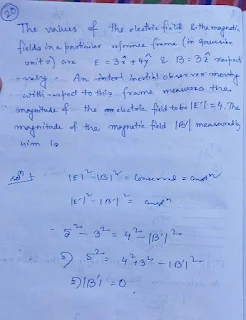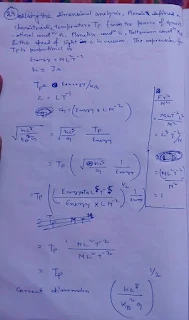This year’s Nobel Prize in physics goes to three men, who, in
their work in the 1970s and 1980s, explained the very weird thing that happens
to matter when you squish it down to a flat plane, or cool it down to near
absolute zero.
Half the prize goes to David Thouless of the University of
Washington, and the other half is split between Duncan Haldane of Princeton
University and J. Michael Kosterlitz of Brown. All the laureates were born in
the UK.
The prize is a reward for their theoretical work, said Thors
Hans Hansson, a Nobel committee member, at the Nobel announcement. “It has
combined beautiful mathematics and profound physics insights, and achieved unexpected
results that has been confirmed by experiments,” Hansson said.
So what, exactly, did Thouless, Haldane, and Kosterlitz prove?
In essence, they showed that the bizarre properties of matter at
cold or condensed states — for instance, when super-cold materials conduct
electricity without resistance — could be explained by the mathematics of
topology.
Topology is a branch of math that studies what properties are
preserved when objects are stretched, twisted, or deformed. Hansson, apparently
anticipating our total ignorance of topology, helpfully brought along a
cinnamon bun, a bagel, and a pretzel to explain it at the prize announcement.
You can describe the number of holes in each shape
topologically, he said. A bun has zero holes, a bagel has one, and a pretzel
has two. There are no half holes. And the number of holes in these objects
stays the same if you stretch or twist them.
Here he is explaining:
Using topology, Thouless, Haldane, and Kosterlitz were able to
elucidate mysteries like how super-cold films of helium change their phase of matter,
and how those phase transitions then change their properties (like how
conductive they are to electricity and magnetism).
Beyond theory, the research has also led scientists to develop
new materials with novel properties, said Nils Mårtensson, acting chair on the
Nobel committee on physics. Some of these materials are called “topological insulators,” which conduct electricity solely on
their surface.
These
topological insulators haven’t made it into any commercial products yet, but
the Nobel committee and the scientists are still excited about the
possibilities for using them in quantum computing and other yet-to-be
discovered applications. One of these insulators,called stanene —
basically a one-atom thick layer of tin —
will conduct electricity at high temperatures with little resistance. One day,
scientists hope stanene could perhaps replacecopper
components in computers.
That
this work on topological insulators won the prize is a bit of a surprise. The
detection of gravitational waves at LIGO was one of the most stunning physics
announcements of the year, confirming a prediction made by Einstein more than
100 years ago. Many predicted the scientists who led that work would win.
Why
wasn’t LIGO selected? One answer: The discovery, announced in February, missed
Nobel’s deadline for consideration in January. The Nobel Committee also typically
awards scientific discoveries many years after they are first shared — after
they’ve truly changed the field.
Source: www.vox.com, www.nobelprize.org






























